Fan Lin
IDGen: Item Discrimination Induced Prompt Generation for LLM Evaluation
Sep 27, 2024



Abstract:As Large Language Models (LLMs) grow increasingly adept at managing complex tasks, the evaluation set must keep pace with these advancements to ensure it remains sufficiently discriminative. Item Discrimination (ID) theory, which is widely used in educational assessment, measures the ability of individual test items to differentiate between high and low performers. Inspired by this theory, we propose an ID-induced prompt synthesis framework for evaluating LLMs to ensure the evaluation set can continually update and refine according to model abilities. Our data synthesis framework prioritizes both breadth and specificity. It can generate prompts that comprehensively evaluate the capabilities of LLMs while revealing meaningful performance differences between models, allowing for effective discrimination of their relative strengths and weaknesses across various tasks and domains. To produce high-quality data, we incorporate a self-correct mechanism into our generalization framework, and develop two models to predict prompt discrimination and difficulty score to facilitate our data synthesis framework, contributing valuable tools to evaluation data synthesis research. We apply our generated data to evaluate five SOTA models. Our data achieves an average score of 51.92, accompanied by a variance of 10.06. By contrast, previous works (i.e., SELF-INSTRUCT and WizardLM) obtain an average score exceeding 67, with a variance below 3.2. The results demonstrate that the data generated by our framework is more challenging and discriminative compared to previous works. We will release a dataset of over 3,000 carefully crafted prompts to facilitate evaluation research of LLMs.
Evolutionary Reinforcement Learning: A Systematic Review and Future Directions
Feb 20, 2024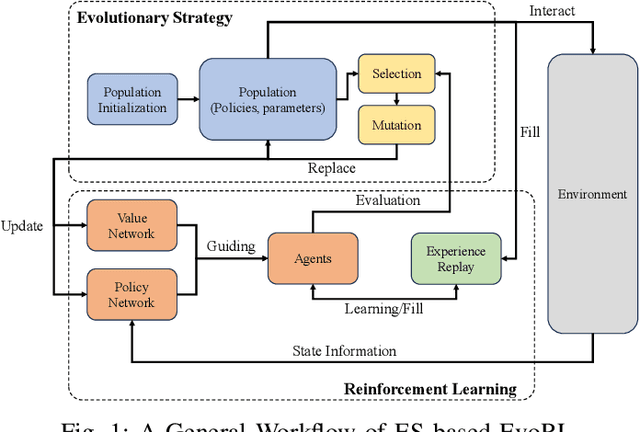

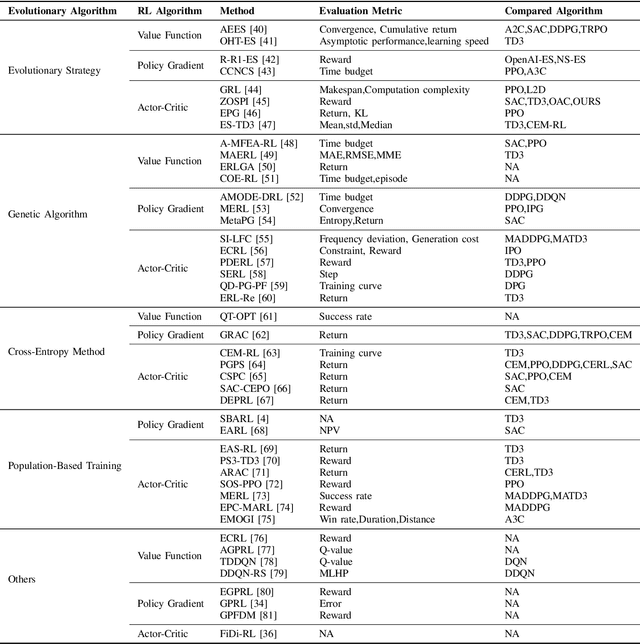

Abstract:In response to the limitations of reinforcement learning and evolutionary algorithms (EAs) in complex problem-solving, Evolutionary Reinforcement Learning (EvoRL) has emerged as a synergistic solution. EvoRL integrates EAs and reinforcement learning, presenting a promising avenue for training intelligent agents. This systematic review firstly navigates through the technological background of EvoRL, examining the symbiotic relationship between EAs and reinforcement learning algorithms. We then delve into the challenges faced by both EAs and reinforcement learning, exploring their interplay and impact on the efficacy of EvoRL. Furthermore, the review underscores the need for addressing open issues related to scalability, adaptability, sample efficiency, adversarial robustness, ethic and fairness within the current landscape of EvoRL. Finally, we propose future directions for EvoRL, emphasizing research avenues that strive to enhance self-adaptation and self-improvement, generalization, interpretability, explainability, and so on. Serving as a comprehensive resource for researchers and practitioners, this systematic review provides insights into the current state of EvoRL and offers a guide for advancing its capabilities in the ever-evolving landscape of artificial intelligence.
A Comprehensive Survey on Deep Learning Techniques in Educational Data Mining
Sep 09, 2023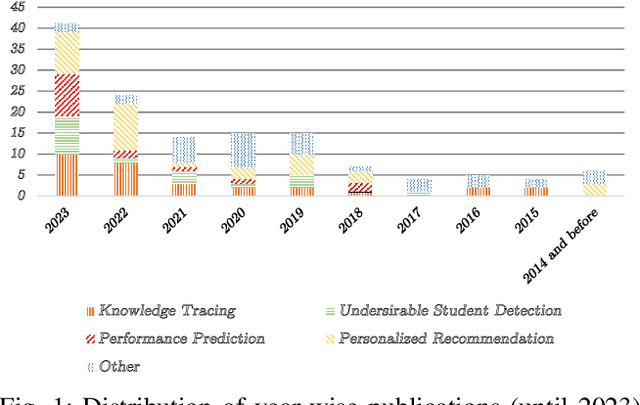
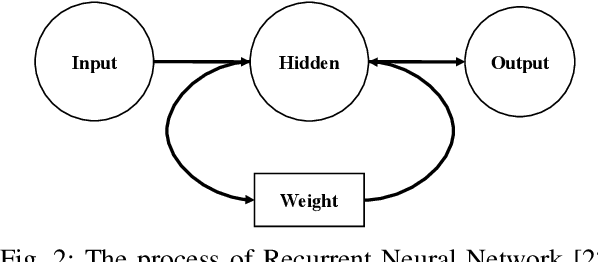
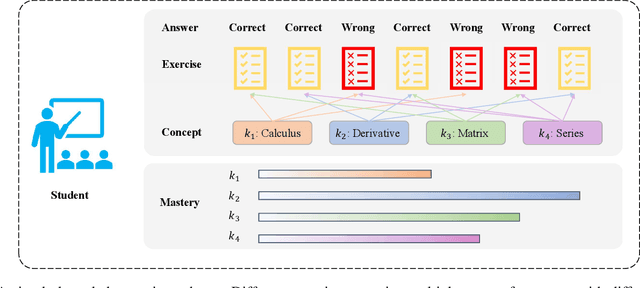
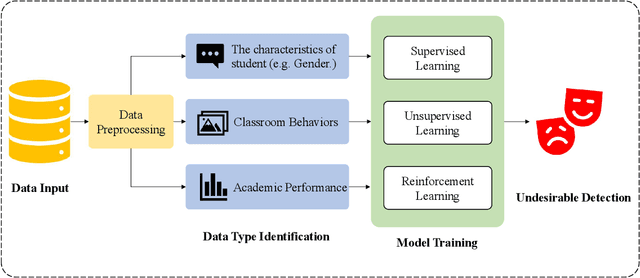
Abstract:Educational Data Mining (EDM) has emerged as a vital field of research, which harnesses the power of computational techniques to analyze educational data. With the increasing complexity and diversity of educational data, Deep Learning techniques have shown significant advantages in addressing the challenges associated with analyzing and modeling this data. This survey aims to systematically review the state-of-the-art in EDM with Deep Learning. We begin by providing a brief introduction to EDM and Deep Learning, highlighting their relevance in the context of modern education. Next, we present a detailed review of Deep Learning techniques applied in four typical educational scenarios, including knowledge tracing, undesirable student detecting, performance prediction, and personalized recommendation. Furthermore, a comprehensive overview of public datasets and processing tools for EDM is provided. Finally, we point out emerging trends and future directions in this research area.
Diffusion Model for Camouflaged Object Detection
Aug 05, 2023



Abstract:Camouflaged object detection is a challenging task that aims to identify objects that are highly similar to their background. Due to the powerful noise-to-image denoising capability of denoising diffusion models, in this paper, we propose a diffusion-based framework for camouflaged object detection, termed diffCOD, a new framework that considers the camouflaged object segmentation task as a denoising diffusion process from noisy masks to object masks. Specifically, the object mask diffuses from the ground-truth masks to a random distribution, and the designed model learns to reverse this noising process. To strengthen the denoising learning, the input image prior is encoded and integrated into the denoising diffusion model to guide the diffusion process. Furthermore, we design an injection attention module (IAM) to interact conditional semantic features extracted from the image with the diffusion noise embedding via the cross-attention mechanism to enhance denoising learning. Extensive experiments on four widely used COD benchmark datasets demonstrate that the proposed method achieves favorable performance compared to the existing 11 state-of-the-art methods, especially in the detailed texture segmentation of camouflaged objects. Our code will be made publicly available at: https://github.com/ZNan-Chen/diffCOD.
Multi-scale Attention Flow for Probabilistic Time Series Forecasting
May 16, 2022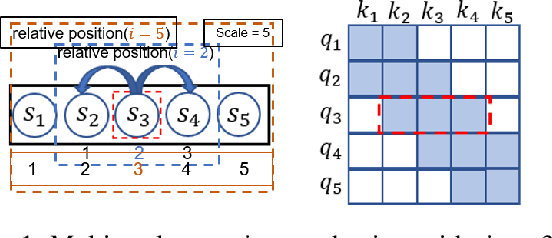

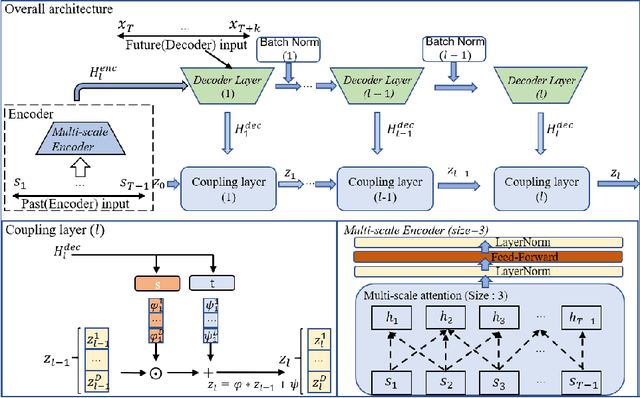
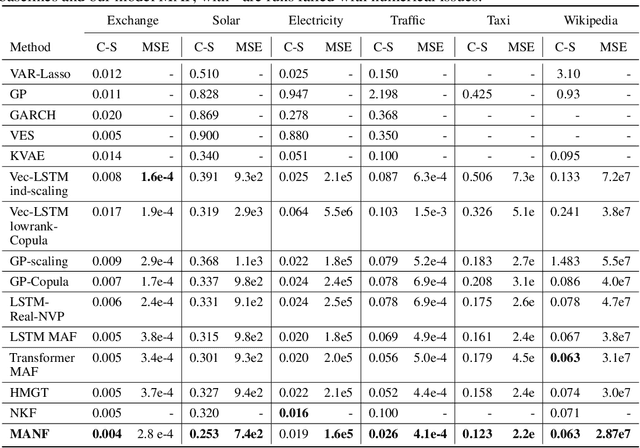
Abstract:The probability prediction of multivariate time series is a notoriously challenging but practical task. On the one hand, the challenge is how to effectively capture the cross-series correlations between interacting time series, to achieve accurate distribution modeling. On the other hand, we should consider how to capture the contextual information within time series more accurately to model multivariate temporal dynamics of time series. In this work, we proposed a novel non-autoregressive deep learning model, called Multi-scale Attention Normalizing Flow(MANF), where we integrate multi-scale attention and relative position information and the multivariate data distribution is represented by the conditioned normalizing flow. Additionally, compared with autoregressive modeling methods, our model avoids the influence of cumulative error and does not increase the time complexity. Extensive experiments demonstrate that our model achieves state-of-the-art performance on many popular multivariate datasets.
Transfer Learning Based Multi-Objective Genetic Algorithm for Dynamic Community Detection
Oct 09, 2021



Abstract:Dynamic community detection is the hotspot and basic problem of complex network and artificial intelligence research in recent years. It is necessary to maximize the accuracy of clustering as the network structure changes, but also to minimize the two consecutive clustering differences between the two results. There is a trade-off relationship between these two objectives. In this paper, we propose a Feature Transfer Based Multi-Objective Optimization Genetic Algorithm (TMOGA) based on transfer learning and traditional multi-objective evolutionary algorithm framework. The main idea is to extract stable features from past community structures, retain valuable feature information, and integrate this feature information into current optimization processes to improve the evolutionary algorithms. Additionally, a new theoretical framework is proposed in this paper to analyze community detection problem based on information theory. Then, we exploit this framework to prove the rationality of TMOGA. Finally, the experimental results show that our algorithm can achieve better clustering effects compared with the state-of-the-art dynamic network community detection algorithms in diverse test problems.
A Survey on Reinforcement Learning for Recommender Systems
Sep 22, 2021



Abstract:Recommender systems have been widely applied in different real-life scenarios to help us find useful information. Recently, Reinforcement Learning (RL) based recommender systems have become an emerging research topic. It often surpasses traditional recommendation models even most deep learning-based methods, owing to its interactive nature and autonomous learning ability. Nevertheless, there are various challenges of RL when applying in recommender systems. Toward this end, we firstly provide a thorough overview, comparisons, and summarization of RL approaches for five typical recommendation scenarios, following three main categories of RL: value-function, policy search, and Actor-Critic. Then, we systematically analyze the challenges and relevant solutions on the basis of existing literature. Finally, under discussion for open issues of RL and its limitations of recommendation, we highlight some potential research directions in this field.
 Add to Chrome
Add to Chrome Add to Firefox
Add to Firefox Add to Edge
Add to Edge